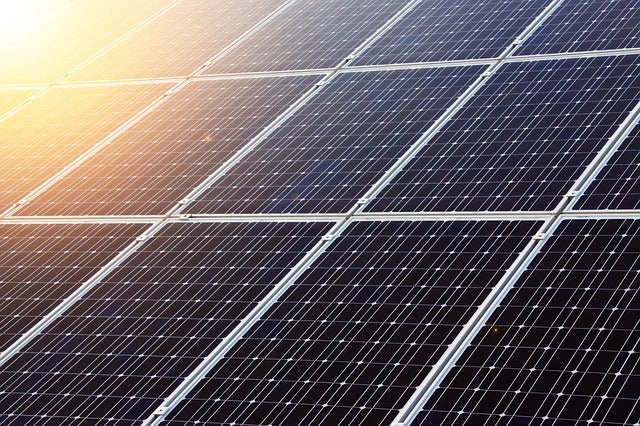(EDF Attorney Ben Levitan co-authored this post)
The Clean Power Plan – our nation’s first-ever standards to limit dangerous carbon pollution from power plants – will help us address the urgent threat of climate change and move toward a clean energy future. It also offers important public health benefits.
Once fully implemented, the Clean Power Plan will reduce enough emissions of soot and smog-forming pollution to prevent up to 90,000 asthma attacks, 1,700 heart attacks, and 3,600 premature deaths — every year.
That’s in addition to the Clean Power Plan’s tremendous contribution to fighting climate change. Climate change itself leads to harmful health impacts, including heat-related illnesses and deaths, longer allergy seasons, more asthma attacks from worse air quality, and more risk from vector-borne diseases like Zika, Lyme disease and West Nile virus.
Just this week, a group of 1,300 health and medical experts from all 50 states issued a Health Professionals Declaration on Climate Change calling for swift action on climate change to protect public health:
We know that the health of every American is threatened by climate change. This statement articulates our agreement on the urgency of addressing climate change to protect human health … Delay only undermines our success, and the longer we wait, the more lives will be affected.
The Clean Power Plan will reduce carbon pollution from existing power plants by 32 percent below 2005 levels, making it the most important step our nation has taken so far to combat climate change. So it’s no surprise that the public health community has joined the broad and diverse coalition supporting the Clean Power Plan in the U.S. Court of Appeals for the D.C. Circuit.
In a powerful amicus, or “friend of the court,” brief, eight leading health associations explained the public health benefits at stake in this litigation. The brief — from the American Medical Association, the American Academy of Pediatrics, and others — underscores that defending the Clean Power Plan is critical to the health of our families and communities.
Public Health Benefits of the Clean Power Plan
In the brief, medical experts describe many of the health hazards wrought by climate change —hazards that the Clean Power Plan will have a crucial role in mitigating:
- “Direct impacts from the changing climate include heat-related illness, declines in air quality, and increased respiratory and cardiovascular illness… Physicians in the United States are already observing the adverse human health effects of climate change.” (Health Associations Brief at page 2)
- “Children younger than five, adults older than sixty-five, low-income individuals and communities of color are most vulnerable to the adverse health impacts of climate change given their reduced resilience to health hazards. These populations are at greatest risk of developing both chronic and acute illnesses from climate-related environmental factors.” (Health Associations Brief at pages 17 and 18)
- “[W]arming trends allow for increases in vectors carrying harmful diseases. Higher temperatures expand the range of environments suitable to disease-carrying species, and contribute to a rise in extreme weather events that produce conditions conducive to clusters of water-, mosquito- and rodent-borne diseases.” (Health Associations Brief at page 9)
- “There is a well-documented connection between rising temperatures and death, especially among the elderly and people with chronic disease. As one dramatic example, the 2003 European heat wave is estimated to have led to approximately 50,000 deaths in August alone… Similar impacts have been seen in the United States. In July 1995, Chicago experienced a heat wave that resulted in more than 600 excess deaths, 3,300 excess emergency department visits, and a significant increase in intensive care unit admissions for heat stroke. And a 2006 California heat wave was associated with over 16,000 excess visits to the emergency room and 1,182 excess hospitalizations.” (Health Associations Brief at pages 6 and 7)
- “Failure to uphold the Clean Power Plan would undermine EPA’s ability to carry out its legal obligation to regulate carbon emissions that endanger human health, and would negatively impact the health of current and future generations of Americans.” (Health Associations Brief at page 3)
Here’s the full list of signatories to the brief:
- American Academy of Pediatrics
- American Medical Association
- American Thoracic Society
- National Medical Association
- American College of Preventive Medicine
- American College of Occupational and Environmental Medicine
- National Association for Medical Direction of Respiratory Care
- American Public Health Association
Health Workers Affirm the Public Health Imperative for the Clean Power Plan
The brief from these major health associations was echoed in other filings by some of our nation’s largest associations of health care workers.
In a declaration, Fernando Losada of National Nurses United — America’s largest federation of registered nurses — noted that National Nurses United members experience:
direct exposure to the harmful impacts of climate change and air pollution on their patients and community health in general. (Losada declaration, paragraph 3)
The declaration also highlights the particular risks faced by health care professionals:
increased rates of infectious disease are emerging due to the impact of global warming on vector ecology and water quality. Any increased incidence of infectious disease in the U.S. poses a risk for all Americans but particularly for our members. (Losada declaration, paragraph 5)
Service Employees International Union (SEIU) — the largest health care union in the United States —also filed an amicus brief that detailed the manifest public health risks from climate change.
The SEIU brief highlighted in particular that the Clean Power Plan:
will produce substantial climate and health-related benefits in low-income communities and in communities of color. (SEIU brief, page 15)
Broad, Diverse Coalition of Clean Power Plan Defenders
Spanning a wide spectrum of medical expertise, all of these health experts agree that upholding the Clean Power Plan is a public health imperative.
The health experts join a vibrant coalition of Clean Power Plan supporters that includes 18 states, sixty cities, leading business innovators (including Google, Apple, Amazon, and Microsoft), leading legal and technical experts, major consumer protection and low-income ratepayer organizations (including Consumers Union and Public Citizen), faith groups, more than 200 current and former members of Congress, and many others. On EDF’s website, you can read the legal briefs that each of those groups has filed in defense of the Clean Power Plan.
As leading health experts and other supporters have affirmed, the Clean Power Plan is an essential step to protect our children from illness and leave a safer, healthier world for future generations.











 (EDF Fellow Will Bittinger co-authored this post)
(EDF Fellow Will Bittinger co-authored this post)

 Two weeks from today, on September 27th, the U.S. Court of Appeals for the D.C. Circuit will hear oral argument on the
Two weeks from today, on September 27th, the U.S. Court of Appeals for the D.C. Circuit will hear oral argument on the  The Clean Power Plan oral argument is coming up soon. On September 27, attorneys will present their arguments in front of the full U.S. Court of Appeals for the D.C. Circuit.
The Clean Power Plan oral argument is coming up soon. On September 27, attorneys will present their arguments in front of the full U.S. Court of Appeals for the D.C. Circuit.